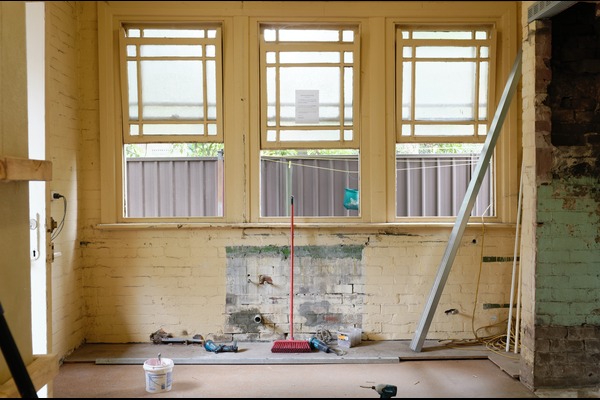The Incoming Use of Blockchain Technology in the Property Industry to Increase Speed and Efficiency
The word blockchain is rapidly taking hold in the modern vocabulary, particularly in a business setting. The average person, if they do not particularly know the meaning, will at least recognise the term from the many headlines on a variety of news sites. The meaning of the word, however, should become common knowledge for the average citizen, not just a recognisable word.
Blockchain constitutes a valuable advancement of technology that could become indispensable in the business world, particularly in the method of transactions, in the coming years. The property industry is no exception to this wave of blockchain. Indeed, a handful of national governments have begun taking steps to implement blockchain in their operations. Given the rising popularity of blockchain, it is important to understand the basics.
Blockchain basics
To put it simply, a blockchain is a database that is spread out through several different servers or computers and is comprised of multiple sets of blocks. These are secured by cryptography within the chain, hence the name blockchain. Each block is preserved as a new block is added, making a permanent and unchangeable set of data. This helps to secure transactions and prevent manipulation. This also creates an easy-to-verify public database to create full transparency. The encryption process involved in blockchain makes it difficult to add incorrect documents or information; implementing a cryptographic key to add a new block
This idea dates back to 1976, at which time it was proposed in a research paper. However, few took the idea seriously at the time. It was then thought of as far too complicated and entirely insecure. In 2008, though, a change took place, setting the stage for the introduction of cryptocurrency via Bitcoin. The implementation of blockchain in this new concept showcased the security and effectiveness of the idea. In the area of cryptocurrency, blockchain has been essential to the growth of the industry and its overall success.
Why use it on property?
The use of blockchain gives the property industry a method to increase both the speed and efficiency of the transaction process. The transaction takes place in an open-source, peer-to-peer network across numerous servers. Validation is done by the network, and a block is immutably attached to the chain. This eliminates fraud, as all information is fixed in the network.
Making fraudulent transactions nearly impossible now eliminates any possibility of record manipulation. This would go a long way towards taking out a massive estimated mortgage fraud of around $1 billion a year.
The sort of security blockchain would offer would all but eliminate any need to worry about the lender being cheated or manipulated. Furthermore, the current process is often extremely complicated and lengthy, creating a daunting task for all those involved. With blockchain, however, the entire process could be entirely reduced to a mere matter of seconds or less, rather than hours or days.
With the outdated state of the many systems in the property industry, a transparent upgrade like blockchain would be a massive breath of fresh air. Not only that, but the implementation of blockchain would also create an allowance for greater accountability and even greater social impact. Furthermore, transactions are incredibly simple to trace in blockchain, requiring one to only trace the ledger to find the transaction. Blockchain also takes out any requirement for a third party for security. The encryption component of blockchain allows a variety of parties to agree on certain rules and facts. The system then easily allows anyone to check and ensure the accuracy of the rules in the database. Thus, the danger of false statements being made or previous statements being altered is eliminated.
Blockchain is an exciting new system of technology that is growing in popularity. Many industries are already seeing the value of such technology and implementing it as soon as possible. The property industry should act quickly so as not to be left in the dust with an archaic system of transactions and verification.
Amazing Multi-Million Pound House Conversions
If you have a million pounds to devote to repurposing a property, then you can do amazing things. These properties that are spread across the world are perfect for the people who live in them. Here are four multi-million pound house conversions.
Scottish Isle of Coll castle becomes a mansion
The mansion on the Scottish Isle of Coll was abandoned for over 150 years before a mansion was built between its crumbling walls. The new home features floor-to-ceiling windows, allowing those living in the home to enjoy awesome views of the breaking waters hitting cliffs located just outside the door. Entertaining is easy in the large open living room, while there are plenty of secluded spots to have a quiet conversation or some solitude. This Hebridean island home has been revitalised with all the latest technology and security while retaining much of its original history.
Budapest weapons factory becomes an art studio and home
A former weapons factory originally constructed between 1913 and 1915 and located in the south part of Budapest is now a home and gallery. The bottom level of the four-story home is a designated workspace and has a guest bedroom, while the second floor contains bedrooms and bathrooms. A short trip up to the next level reveals an open living space with room to relax and a spacious cooking area. The top floor contains an elaborate fitness area, sauna, and pool with easy access to a rooftop terrace. Known as Loft 19, this property maintains much of its concrete and industrial vibe throughout.
Salvation army barracks in Australia
The first Salvation Army barracks in Australia lay deserted for many years before it was repurposed into a mansion. While it costs many pounds to do the transformation, the building is one that anyone would proudly call home. Since the building featured 28-foot-tall ceilings, a menagerie level was added to serve as the bedrooms and bathrooms. While this home has many modern features, tribute was paid to the building’s original purpose by leaving the original walls and signs throughout the home. One reason that this home cost over a million pounds to convert is that the floor is made of a single slab of yellow sandstone imported directly from Portugal.
The old ambulance station becomes a minimalist home
Sitting within a walled compound, a St. John’s Rye, England, four-story home was once an ambulance garage for two ambulances. The home features a minimalistic design, and its current owners love the large open space for entertaining guests. While the owners intend to use it as a summer home, the main feature of the open living space is a double-sided wood burner. Exposed timbers throughout the home help maintain its minimalistic appearance.
If you had a million pounds, then you could do a lot to restore a property. Consider these possibilities before starting on your own project.
Never Too Old To Branch Out – Make Dreams Real & Be An Entrepreneur
In our current times, the concept of being an entrepreneur is related to images of entrepreneurs like Mark Zuckerberg, who have changed the traditional concept of the way entrepreneurs represent themselves. One look at the current entrepreneurs makes individuals in their mid-thirties or early forties question themselves about whether they are too old to be entrepreneurs. If you are one of those people who thinks like that, then you need to think again.
An edge is all you need
Firstly, the notion that an entrepreneur has to be young is a stereotype. Frankly, the large population ventures into their own businesses when they are at least 40 years old. There are those who even start when they are fifty years old, thanks to their wealth of experience.
Ideally, it is even considered a good idea to start a business when you are a little bit older, because most young people get into business without knowing anything. As a young person, you might have no idea what you are getting into, you might not understand your competition, and you might not have the capital needed to start your business.
There are a myriad of things you have to learn when you get into the corporate world. As a young person, you will have to understand business, interact with venture capitalists, and save up some capital over time to start your business.
As we all know, with experience comes wisdom. This is especially true in entrepreneurship. When you are older, it is easier to access financial backing from loan institutions because you have collateral to help you secure the capital needed to start your business. This is an advantage older people have over young entrepreneurs.
To give an example of a legendary entrepreneur who started their business at an older age, we have Mr. Ray Kroc, the founder of McDonald’s, who sold milkshake mixers until he was 52 years old. We also have Ms. Mary Kash, the founder of Mary Kay Cosmetics Company, who sold home decor until she was 45 years old. Many more entrepreneurs started legendary businesses at an older age.
Don’t consider age when starting a business
You might lose your fitness or your looks with age, but age is just a number, and innovation is what is needed, not looks. Consider investing more in your attitude and the choices you make because everyone gets old, but not everyone makes the right choices.
It’s never too late to start a business. You might feel like a misfit when you attend an entrepreneurial conference, but learn to take it as an advantage because the outcasts are the ones who usually stand out.
Have a focused approach
When you are in your twenties, you can venture into different fields. You can start different businesses and fail at them. When you get into your thirties, you become more focused, and you start to understand the ideas you have and the potential some ideas have to survive in the market over other ideas.
For instance, if you decide to start a real estate and property renovation company and have been working in the real estate industry for years, you have a better chance of starting a successful business in that space because you have the experience and focus instead of starting an entirely new business in a field you are not experienced in.
Have a different mindset
Our minds are like the ocean that is flowing with ideas on a daily basis. When we are young, sometimes we come up with some crazy ideas that cannot turn out to be great ones. When you are young, the best thing to have is time to learn a new skill. But when you have grown older, the big picture comes up, and you start creating a business with the right tools and strategies.
There are young people who see the big picture when they are young, but the most important point to take away is that great businesses take shape when the big picture is seen and the right strategies and tools are used.
Are start-ups really meant for the young?
Many people might say that start-ups are for the young, but when you are in your thirties and forties, you also have time to plan a business from the ground up. Ideally, you have an edge over the younger generation because you have saved enough and have more knowledge in the field you are trying to get into.
Create a wide network
When you stay in the corporate world for a long time, you create networks that you can use when you start your own business. Young entrepreneurs struggle because they have to use a lot of energy and resources to meet up with some investors. But when you are an experienced professional, your contacts who you have related to over the years can easily spring you up to success.
Think again
There are still many more young entrepreneurs who are successful, but there are still many more of those who have successfully started at a very young age. When you lack in your youth, you cover your experience; this is what we call the edge. So, if you plan to give up on being an entrepreneur because of age, think again.
8 More Amazing Restorations!
Rag to riches stories, drag to fab situations, dramatic and awesome restorations, all of these make for inspiration. You probably enjoy watching an episode of Extreme Makeover as much as the next person. There is nothing more exciting than watching a dull building transform into an awesome masterpiece.
As a home restoration expert, I can confidently say that not all restoration projects cost a fortune. It simply depends on the amount of work needed and the picture you have in mind. You can get a really awesome renovation for a few thousand; however, a big project can run into hundreds of thousands.
If this is the case and your funds cannot carry what you have in mind, all is not lost. You can apply for a bridging loan to fund your renovation project. A bridging loan provides a way to raise short-term finances that will allow you to get your renovations done while looking for other sources of long-term finance. This way, your project won’t get stuck for lack of funds, and you can join the few lucky ones whose homes are beautiful enough to grace home magazines and websites.
While virtually every restoration is beautiful in its own right, check out the following 8 to see examples of some really amazing restorations.
Up one level
A two-bedroom bungalow in Hampshire became too small for the growing family, despite the fact that it had a small terrace out back. Due to the sloping terrain surrounding the house, building an extension would have been too expensive. The best approach, therefore, was to construct a new first floor, adding a dual-pitched roof that allowed all bedrooms to be located upstairs. This made it possible to have a bigger and better living room on the ground floor.
The original bedroom was joined into the hallway to create a bigger entrance with a staircase and vaulted ceiling. The overall effect is one of extreme creativity coupled with an awesome, stylish white finish.
An astonishing remake
A 1950s bungalow in Oxfordshire was brilliantly converted into an ultramodern masterpiece, with much of the materials coming from the original structure. The owners wanted a modern home suitable for their growing family, and the result was a striking difference from the drab-looking farmhouse-type bungalow with three bedrooms and a loft. The new structure came with better access to the garden, a well-lit living area, and a glazed extension, resulting in an awesome courtyard setting.
From old to modern
Almost everywhere in the UK, you are bound to come across a ranch-style home. One such home was bought by a family in Manchester with the intention of modernising it. The idea was to give it a whole new look without tearing down the building or changing the structure in any way. The result is an exciting new structure with a silhouette design made by creating a bigger living and sleeping area and by adding a new parapet to the roof. A dried Douglas fir coat on the old brick exterior gave the building an endearing rustic atmosphere, which also allowed it to blend in perfectly with other houses in the neighbourhood.
Meet the Tudors
Mark and Julia came across a Georgian home for sale in Shropshire and fell in love with it immediately. After buying it, they spent the next ten years putting it together. The result is an awesome Tudor-style home that anyone will envy. The new design involves bringing down the height of the house; they were also able to add twin three-story wings, leaving the original two-story building in the middle to create a balance. One entire wing has a guest entrance, a ground-floor living room, a kitchen, and two bedrooms. It is obvious that very close attention was paid to every detail and aspect of this awesome renovation.
Dreary home to period charm
Restoring a home to its original state is a very British thing to do, or so the Brits think. But what cannot be denied is that period homes have a charm that modern buildings do not, so you cannot blame anyone who wants to restore their homes to their original vintage beauty. A 19th-century terraced building in the south-west of London is one such building that became a victim of the 20th century. Lots of modern updates helped strip off its period charm, making it a ghost of its original self.
Restoring the original Victorian sash windows and exposing the brick walls are just some of the steps taken to restore this home to its lost glory.
When ugly just won’t work
Owner Jo Glenton realised that his 1960s Cheshire 3-story property was ugly, despite its good proportions and great location. A lot of’major surgery’ was carried out on the property to bring it to a point where anyone can be proud to own it.
This involved dealing with the ugly brickwork and using a soft colour scheme to create a balance between every component of the house. The windows are enlarged to allow for more natural light, and the green tile on the roof was replaced with slate to allow for a more natural look. The overall result is a testament to creativity and will.
Renovating for space
In 2012, Sam and Patrick Regan came across a detached 1950s home with a little bit more than the regular wear and tear. Leaking roofs, rotten and broken windows, and very little visual appeal are putting a brave face on what the new owners were to face in their new home. Even the estate agent couldn’t help but admit that the property needed a bit of work.
Despite these limitations, Sam and Patrick set about converting their four-bedroom property into a five-bedroom home for their family.
Today, Sam, Patrick, and their family have zero regrets and are completely enjoying their new home.
Utilising the loft
Designer Sarah Wallis bought a single-story flat in London that was made up of a set of small rooms left abandoned since sometime in the 1970s. Despite the state of the property, Sarah was willing to take it and invest time and money into renovating it into a whole new loft flat. The project involved knocking down the walls between rooms and making a large open space for the living and kitchen areas. Two-thirds of the ceiling was then moved to allow for an extra bedroom and bathroom. The overall result is an awesome-looking loft maisonette.
10 Top Reasons For Using A Bridging Loan in 2018
As typical bank loans become more difficult to assess, bridging loans are increasingly becoming the go-to option for not just people but also businesses that are in quick need of cash.
Initially, a bridging loan was simply a temporary or short-term loan used by homeowners to get quick cash to facilitate the purchase of a new home. The loan operated by “bridging the gap” between a homebuyer’s new mortgage and the sale price of a new home in the event the homebuyer hasn’t yet raised funds by selling his or her current home. Such a bridging loan would be secured on the buyer’s current and yet unsold home, while the loaned sum is used as a down payment on the new home. But over the years and due to its increasing popularity, bridging loans have evolved into a more versatile financing option.
As of 2018, individuals and businesses alike have found other ways to make the most of bridging loans. Below, we’ll be looking at the top five ways individuals and companies will use bridging loans in 2018.
How individuals are using bridging loans in 2018:
- To avoid repossession: For homeowners who lack the financial capability to stave off a repossession, bridging loans have become a saving grace that can be accessed quickly and used to settle debts. If debts are piling up and there is no immediate cash source available, a bridging loan can be used to quickly settle a portion of the debt for the short term and thus delay a repossession.
- To buy a property at auction: If a wonderful property at a great price is suddenly made available at an auction, instead of letting the opportunity pass by, a bridging loan can be used to finance the purchase of the auctioned property. It can also be used to snatch a repossession and grab a bargain.
- Property development purchases: If you need to renovate or upgrade your property and you require quick cash, a typical bank loan might take a long time to get approved or might not even be approved at all. A bridging loan, on the other hand, can be applied for quickly and received within a few days. The loaned sum can then be used to convert your home, refurbish it, or even extend it.
- To buy time to seek a longer-term loan provider: If you need money fast for a pressing matter, you can use a bridging loan to finance yourself for the time being until you are able to get a longer-term loan provider. This move can be an expensive one, especially in light of the cost of bridging loans, but it can also be a fast and effective solution to a pressing financial need.
- For capturing an investment opportunity: Opportunities are unpredictable and can pop up at any moment, including moments when you lack the financial capability to grab the opportunity and make the best of it. But instead of letting the opportunity pass you by due to a lack of funds, you can grab a bridging loan and use it to seize the investment opportunity. This tactic can be used to change the financial fortune of anyone who is presented with an especially favourable investment opportunity.
These are just some of the ways people are currently making the best of bridging loans.
How businesses are using bridging loans in 2018
It’s not just individuals that are making the best of bridging loans, as businesses have also found ways to use the fast and easy option to their benefit.
Some of the ways companies are presently utilising bridging loans include:
- For grabbing business opportunities: In the world of business, time is of the essence, and the ability to make split-second financial decisions can make the difference between a huge profit and a great opportunity lost. Rather than being restricted in investment opportunities due to a shortage of funds, bridging loans provide an avenue for businesses to get loans fast and make financial commitments to sudden and exciting new opportunities. A bridging loan can be used to finance the buying or starting of a new venture or to acquire another business in a strategic corporate move. This is possible thanks to the fact that a bridging loan can be accessed within a few days instead of the lengthy time periods required for approval of traditional loans.
- For enlarging commercial operations: A business that’s looking to expand its operations into new locations or diversify its business can use the finances from a bridging loan to accomplish this quickly. Such a loan can also be used to purchase new equipment and serve as regular funding to accomplish new business objectives.
- For refurbishments: An office refurbishment might be long overdue, but a company is unable to carry it out due to financial constraints. A bridging loan can take away such constraints by offering some quick financing to fix up either the office area or give the retail space a facelift. A benefit of this is that the loan can be repaid when the business premises are remortgaged after the refurbishment has boosted the value of the premises.
- Refinancing owed debt: In the event there is a short-term cash flow crisis that leads to debt, a bridging loan can help pay it off or buy more time until the business can get its affairs in order. Also, refinancing can aid in consolidating existing debts into a single entity, which is much easier to manage. The loaned sum can be used to pay off lenders or settle outstanding payments to key providers and suppliers.
- For relocation: If your business is looking to move to a better location in 2018 that will expose it to greater opportunities, bridging finance can help facilitate the relocation by providing the cash you need to purchase a new business space. It’ll also make available cash for expenses such as purchasing new furniture, setting up a new IT infrastructure, removals, and much more.
So rather than restrict yourself to the arduous process of applying for a traditional loan, try out a bridging loan for faster access to needed funds as well as a less strenuous loan application process.
10 Super Tips for Home Renovation for Massive Profit
Studies show that more people are looking for homes that suit their lifestyle. However, they may not have the time, skill, or inclination to fix up the property on their own. This is where smart investors can make massive profits. Renovations can greatly increase the value of a property, and an eagle-eyed investor can pick up a property for a song, put in a bit of cash for renovations, and sell it off at a huge profit.
In this article, we look at 10 tips to adopt that would greatly increase the value of a home after renovation:
- Do your research: Take a moment to suppress the excitement of the possibility of making a killing in a renovated property and research the improvements that are more likely to add value to the home. When doing your research, you need to take the following factors into consideration: the neighbourhood prevalent taste, the style of the house, and the current market. This information will help you decide the type of renovation you need to carry out and the part of the property you should pay more attention to. No matter how fancy they are, changes that don’t fit won’t fly, and rather than increase the value of the property, they may actually make it drop.
- It’s not about you: Everyone has an idea of what their dream home should look like. But if you are renovating for profit, adding your idea of ‘character’ can be counterproductive. What is attractive to you can actually be a turn-off for someone else. Therefore, ensure that your plans for renovations actually add value to the home. You need to think about what the buyer will want, not what you want. Are you renovating for young couples or a small family? In order to make massive profits from your renovation, you have to end up with a product people will want to buy.
- Budget: if you were renovating for yourself, then it would have been okay to splurge a bit, but if the plan is to make a massive profit, then you may need to be cautious with your expenditure. It is a good idea to engage a professional who will value the property and help you come up with a good budget. Aim to sell off the property at double what you spent on the whole project, with a little bit of buffer to give room for negotiations.
- Get your finances together: You have your estimate; now is the time to check your savings account. No matter how cautious a budget is, market conditions can change suddenly, and this can cause a spike in prices. If you feel that what you have saved up will not see the project through, you can easily raise more money by applying for a bridging loan. A bridging loan offers you a way of quickly raising money in the short term to finish your project. Once you sell the home, you can pay off your debt. However, it is important that you have enough money to see you through the project. It just wouldn’t do to get stuck halfway because of insufficient funds.
- Make it simple: Sometimes, simplicity can be the best way. There are lots of DIY home improvements that could be of great help to your renovations. You don’t need a large firm to handle the renovations; a fresh coat of paint, new door knobs, new bathroom fixtures, and replacements here and there can still improve the value of your property. Unless you absolutely need to, your aim is to make the house the second or third best on the street and nothing more.
- Create a network of agents: You need the right people to come see your renovated home in order to get a bid. Connecting with agents in your neighbourhood will expedite the process. Estate agents always seem to have a ready list of people looking to buy houses, and your prospective customer can be on that list. Let them know what your plans are, so they can get you the right buyer as you are finishing up.
- Invest in a competent team: No matter how all-around you are, there are just some things you cannot do alone, such as renovating a house. You will need plumbers, electricians, painters, cleaners, and so on. Look for a competent local team that can give you a good job at the right price. Preferably, look for a small to midsize outfit that won’t cost you much so that you can still maintain your goal of making good profits.
- Make use of spaces: If the property has extra space, this can be converted into an extra room or a bathroom. And if the space cannot be used inside the house, you can create an extension for the house, such as a car garage, a children’s playroom, or a storage shed. The more features you are able to coax out of the property, the higher the price you can ask for it.
- Lighting makes perfect: Alternatively, rather than convert empty space into spare rooms, you can actually knock down walls to free up space in the sitting room or dining area. This will allow light to enter these areas, creating a warm, welcoming atmosphere that will significantly increase the appeal of the house.
- Not so visible renovations: If you have enough funds, you may consider bringing the house up to spec, such as installing a home security system, insulation, and a heat and cooling system. Even though these renovations are not as obvious as a fresh coat of paint or a new roof, they have been known to significantly add to the value of a property. The new owners will not need to do all of this, and you can confidently ask above the market price for these privileges.
An Overview to Property Refurbishment and Barn Conversions
To take a look at the way in which bridging loans are used to create profit in the field of property development, we spoke with James Stevenson, who has 20 years of experience, about some first-hand experience about what is involved in the conversion process that earns the development company profit.
This is what James had to say. Over the years, we have worked on many refurbishment projects, but one of the most memorable ones we worked on was the classic “barn conversion” in 2005 in Brighton. This was one of the most interesting projects we worked on due to the fact that we literally started with what can be explained as a blank sheet.
When we first got to the site, the wall was weak and could react to gentle pressure. The cement was very old and unstable. Our immediate reaction was to look up (in case the roof fell in), and we prepared ourselves to get out of the way just in case it did. What a job it was! However, it turned out we really enjoyed it in the end (as did the client who funded the whole conversion), for the following reasons:
The conversion process
For argument’s sake, we sorted out the architect’s plans and got all the planning permissions through before we engaged in the transformation of this old backstreet relic into the top-class luxury home we envisioned. After the planning was in place, we presented the appropriate information to the client and got the go-ahead to begin.
It is pertinent to note that the client was funding the whole process, so of course he had to know what the budget was and the time period we were aiming for, as well as the shortfall short fall of the programme time limits. In every scenario, we had a failsafe curtain that involved contingency plans around every corner. Thus, if there was an issue that held up the projected plan, it would be addressed financially.
There is a document, but it can be commonly known as a notary agreement where both parties understand and confirm that these are the parameters of the agreement that they will adhere to, and if such a shortfall occurs, there will be a financial clause that comes into effect.
Steps in the design process
First days on the job and planning are the keys to organising the first steps. When the overall concept is conceived, the building begins. We took the soil floor and laid the concrete screed into position, levelling the base for the build.
Next was screeding the floor, which set the level for the first-floor height. Measuring from the floor, we set the joist hanger positions correctly using “Chemfix bolts into the walls” to secure the first-floor infrastructure into place.
(Source: wikihow.com/Screed-a-Floor)
Joist hangers were put into place so that the first floor could be constructed, ready to build from. Then the stairs were put in, and the boarding was installed, forming the upper section of the property.
Once this was laid out, separate compartments were put into place in the bedrooms, bathroom, hallway, and so on. As the lower section of the ceiling was not yet boarded, the electricity and pipe work were installed so all the associated could then be connected up in situ.
Planning is everything on a job like this. Overboarding downstairs was completed together with plastering, ready to decorate later. Next was the installation of the stairway into position so the upper floor boarding could begin.
Know what you want to do
Pipework needed to be laid into place, along with the inflow and outflow of soil pipes needed for the fitting of both kitchens and bathrooms together.
Plans and designs understood that layouts were essential, so all the trades knew exactly what the outcome required was and how to implement the jobs at hand. Managing the trades (for a foreman or site manager) is seriously essential work, as any mistake costs money. If things are managed correctly in the first place, then the rest should fall into place on time and, above all, on budget.
Forward planning
Once you have a grasp on the requirements, materials are ordered as required in the correct order. There is little point in bringing in the trades or professions when they do not have the base materials to work with, and again, planning is the key to all of this. Everything must be pre-organised and ready on site to get on with the job, ready to start the process from the start. Time is money, and planning is the key to everything.
The upper floor layout was positioned with bedrooms, toilets, bathrooms, etc. all put into place and fitted as per the specifications detailed on the plans. The client was overseeing all the steps involved, so if there were any issues, they were picked up ASAP and dealt with accordingly.
Funding and confidence
All the funds were in place, ready to go ahead, so now it is of the essence to keep to the schedule. A bridging loan had been raised to complete work, so we were on track for completion within the two-month period set to complete the entire project.
As Nick Marr Property Development Expert points out, “With any barn conversion or conservatory design, it is important to get everything right from the start, so the job runs smoothly and will be completed in the specified time frame, first time, which obviously eliminates costly mistakes and delays overall.”
Conclusion
The above is a brief outline of the steps involved and the mental set of actions needed to get a very basic grip on such a project from the outset.
We hope this write-up was of help to you in the learning or other processes. Property development is a thorough and exacting process. You need to know what you are trying to do and how you set about doing it, from the smallest consideration to the end result. If you have put into play financial backing, then it is vital that you finish the project on time; otherwise, you risk the penalty clause agreed to when taking out the loan.
Ex-Metro Bank Boss to Launch Specialist Lender
Now more than ever, borrowers and financial service providers alike are exploring the possibilities alternative lending brings to the table. As businesses and the public in general continue to shun conventional banks and lenders for more convenient and accessible alternatives, those with an eye for opportunity are refusing to allow this unique shift to pass them by.
Jason Oakley, former managing director of commercial banking and mortgages at Metro Bank, is preparing to launch a new specialist lending service as an alternative to mainstream banks and conventional lending channels. Owned and operated by City of London Group (COLG), the new lender is scheduled to begin operating by the end of 2019 and is awaiting the issue of its banking licence.
Taking a sizeable step away from conventional lending, the new company is set to focus primarily on commercial lending, SME, bridging, and development finance sectors.
The former MD of commercial banking at Alliance & Leicester/Santander, Bryce Glover, has joined forces with Mr. Oakley on the venture, the pair having invested £50,000 and £400,000, respectively, in the new business.
At the same time, Credit Asset Management Limited (CAML) has taken its first steps towards the establishment of a new business line known as Property & Funding Solutions (PFS), which is being created to provide commercial development and bridging finance, along with secured lending for current clients of CAML.
“I am delighted that our banking licence application will shortly be under way,” commented chief executive officer Michael Goldstein.
“We are also in the process of establishing our new business line in property bridging funding under the existing CAML business, and our re-launch of the Milton Holmes equity release business may be achieved more quickly than originally envisaged.”
“Overall, the future is looking bright with a strong leadership team in place to deliver on all our strategic objectives.”
While optimism within the group remains high, external critics have suggested that entering the bridging loan market as it exists today may prove difficult. The reason being that, on the back of unprecedented demand for such products among commercial and private borrowers alike, the market has become extremely congested with alternative and independent lenders of every shape and size. It’s been argued that entering such a crowded market could represent an inadvisable decision, unless the lender in question has something specific and unique to offer in terms of value.
Given the ongoing performance and financial stability of COLG, it’s entirely possible that the new bridging business will have every capacity to bring its own unique value proposition to the table for commercial borrowers across the UK.
Delays and difficulties associated with conventional mortgages and business loans are driving borrowers away from alternative lenders in growing numbers. With alternative options available, borrowers are no longer willing to jump through hoops and accept extraordinary delays, simply to get their hands on the finances they need.
The market may be crowded, but in terms of overall demand and relevance, there’s technically never been a better time to explore the unique possibilities presented by intelligent financial service provision.




 0116 402 7982
0116 402 7982







